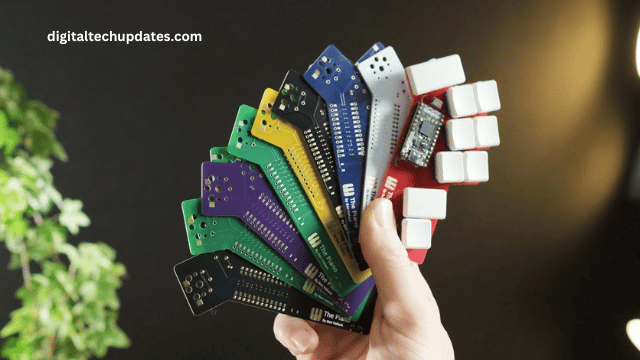Introduction:
Printed Circuit Boards (PCBs) are the unsung heroes of modern electronics, serving as the backbone of countless devices we use daily. One aspect of PCBs that often goes unnoticed is their color. While the default image that comes to mind is a verdant green PCB, these essential components come in a variety of colors, each serving a unique purpose. In this blog post, we’ll explore the common PCB colors and the reasons behind their hues.
The Ubiquitous Green PCB:
Let’s start with the most common and recognizable color: green. Green PCBs dominate the electronics landscape, and there’s a historical reason behind it. The green color is a result of the solder mask used to protect the copper traces on the board. The mask not only shields the copper from environmental factors but also aids in soldering components accurately. The green color is achieved using epoxy-based materials and pigments, creating a durable and visually appealing finish.
Why Green?
The dominance of green PCBs can be traced back to the development of the photoimageable solder mask in the mid-20th century. This green coating quickly became the industry standard due to its reliability, ease of manufacturing, and cost-effectiveness. Over time, engineers and manufacturers grew accustomed to green PCBs, and the color became synonymous with the very concept of printed circuit boards.
Beyond Green: Exploring Other PCB Colors:
While green remains the go-to color for PCBs, technological advancements and changing preferences have led to the emergence of alternative colors. Black, blue, red, and even white PCBs have found their way into various electronic devices.
- Black PCBs: Black PCBs are often associated with high-end or premium electronics. The black solder mask provides an aesthetic appeal, making it a popular choice for gaming motherboards, audio equipment, and other consumer electronics. Additionally, black PCBs can enhance heat dissipation, a crucial factor in devices that generate significant heat.
- Blue PCBs: Blue PCBs are chosen for their visual appeal and are commonly used in products where aesthetics play a significant role. The blue solder mask offers a distinctive look, making it suitable for products like LED displays, automotive electronics, and custom-designed gadgets.
- Red PCBs: Red is often associated with power and intensity. Red PCBs are used in applications where visibility of traces and components is crucial. They are commonly found in medical devices, industrial equipment, and aerospace applications.
- White PCBs: White PCBs are less common but find use in applications where a clean and minimalist appearance is desired. Medical devices, certain automotive electronics, and specialized industrial equipment may opt for white PCBs.
“Why is PCB Green?” – The Answer Unveiled:
If you’ve ever wondered why PCBs are predominantly green, you’re not alone. In fact, a comprehensive exploration of this question can be found on PCBasic.com. The article delves into the historical context, the development of solder mask technology, and the reasons why green became the industry standard for PCBs.
Conclusion:
The world of PCB colors is as diverse as the electronic devices they power. While green remains the classic choice, the emergence of alternative colors reflects the ever-evolving nature of technology and design preferences. As we continue to witness advancements in electronics, the color palette of PCBs is likely to expand, bringing both functionality and aesthetics to the forefront of innovation.




